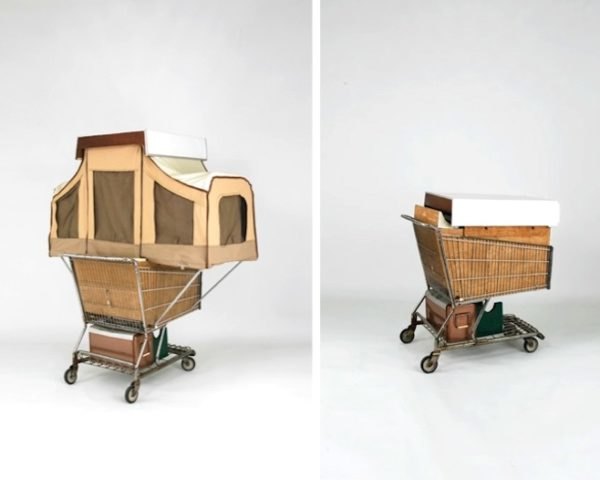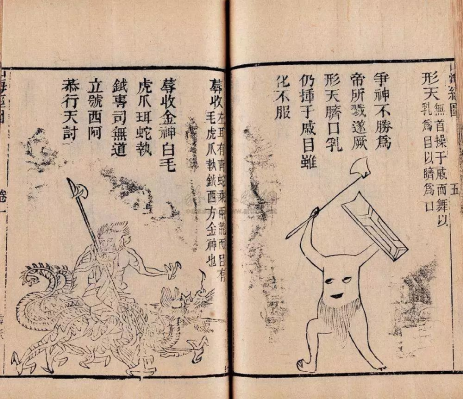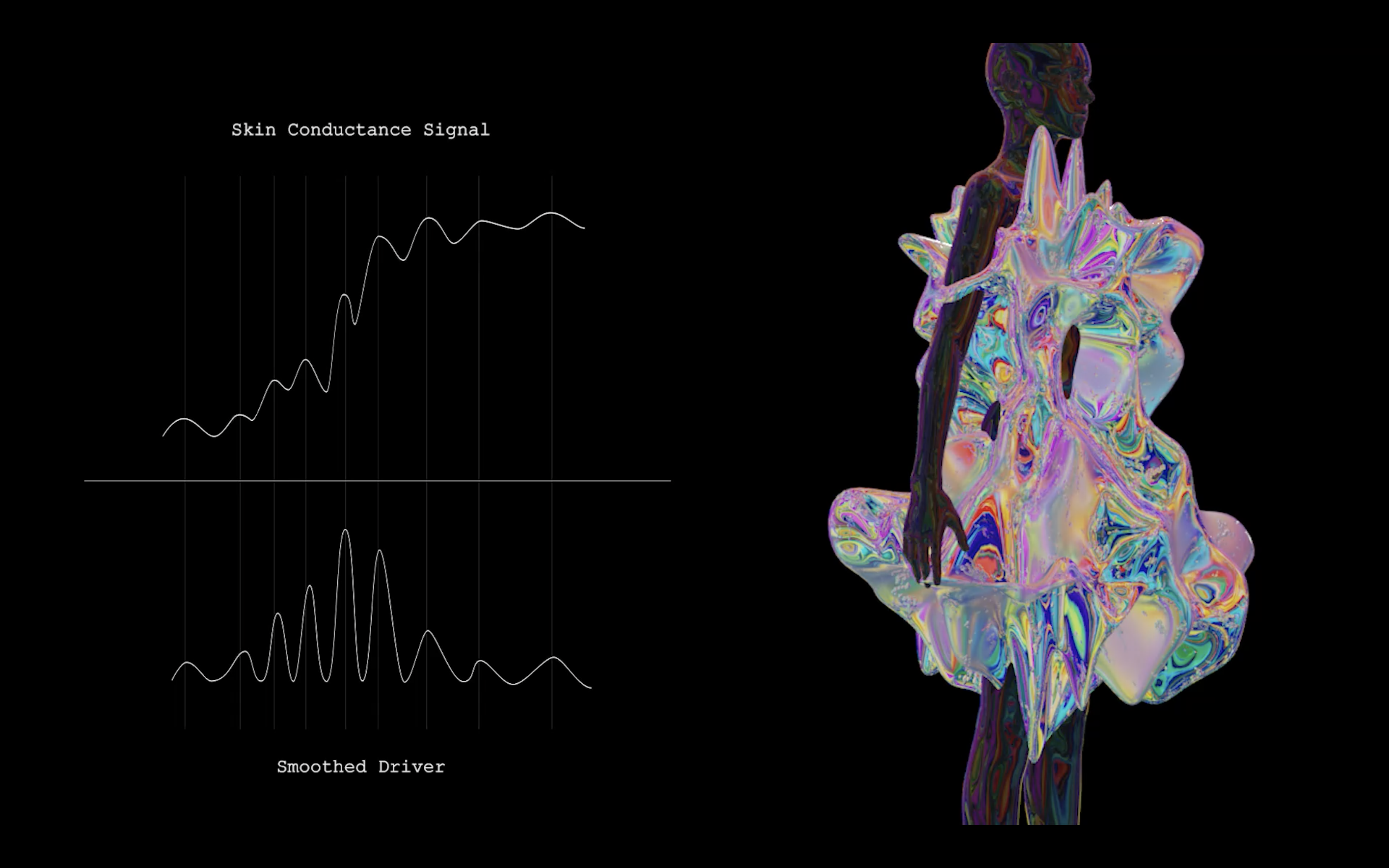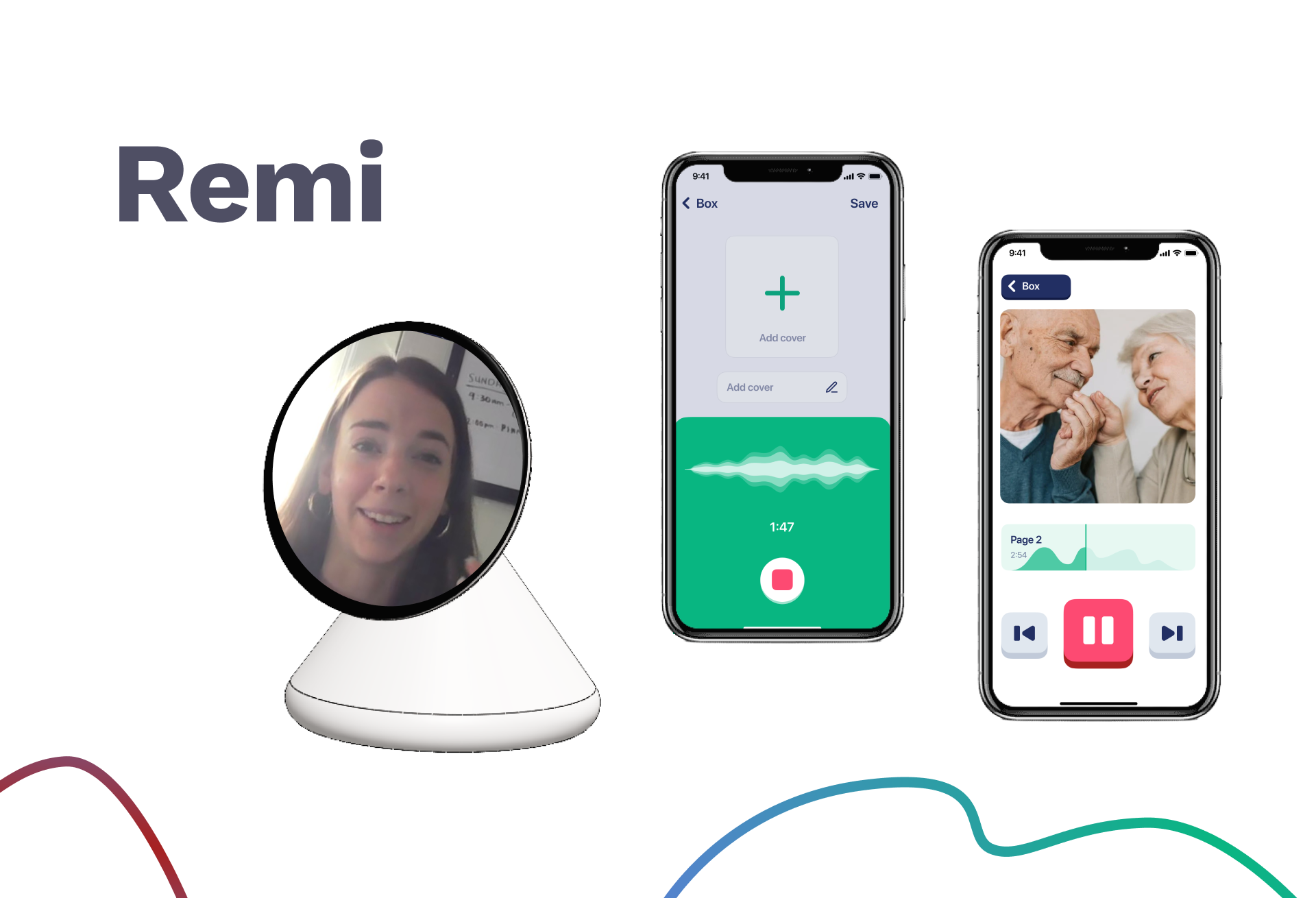The showcase and thesis work is captured in this booklet.
Below is a collection of preliminary studio projects. To view the final work use the link above. The concepts below are only meant to serve as an in progress snapshot from earlier in the semster.

Jan-Simon Veicht
Our systems of mass production live within the brink of its possibility. Through our consumption and our constant output, we simultaneously recycle and destroy. Thus, what if the products of our daily lives are being created in dialogue with nature? What new, preferred aesthetics would emerge that would reflect our relationship and the consumption of our devices? Audiomycelia uses mycelium - the root-like network structure used in fungus- as its primary matter. Utilizing its shock absorbent, lightweight, and noise-canceling properties, the project grows headphones from the trash of my peers, using discarded sawdust from the workshop and cardboard litter as a growing base. A case study and a proof-of-concept piece of Industrial Design, the project speculates different ways of manufacturing future consumer devices. Using mycelium as a matter of method, the work envisions a world of scalable manufacturing and bespoke human factors through 3D scanning of a user's physical head characteristics. My vision is to design a skeleton structure with mycelium in true partnership, to let the growing process become the design process itself while revealing unique forms and shapes based on a standardized configuration.

Adam Huth
Design for Uncomfortable Consumption is a project that uses public interventionist art and crickets as food and material to facilitate uncomfortable conversations around Western consumption, sustainability, food systems, ethics, and culture and race. For thousands of years, humans have eaten insects - yet in our current era insects are shunned in the West. Insects are not only a valid and nutritious food source, but an emerging technology capable of producing new materials, medicines, and ways of life. The project is highly centered around a mobile bicycle kitchen called “Bug Bike Bistro” that acts as a space of public engagement and documentation. In the project, I’ll be conversing and cooking with members of the public, serving them insect based foods in insect based bowls. The bistro itself is designed to be adaptable to a range of settings and situations, allowing the project to continuously evolve as more knowledge is shared between myself and strangers. The intervention aims to use discomfort, collaboration, speculation, and leisure to shift perspectives of a westernized public, making people consider more carefully their food sources and general consumption, their relationship to their own and others’ cultures, and their stances and knowledge on ethics both in and out of food.

Effie Jia
VITALIS examines questions of empathy and planthropocene through an immersive experience of performing plant surgery. I wish to explore how, when, and why an intervention is called for and what goes into deciding on a proper course of treatment. For example, in the case of cancer, doctors may decide between chemotherapy and surgery to remove a tumor. I hope to create a “Surgical Guidebook for Plants,” which details procedures, techniques, instruments, and decision-making processes for performing surgery on plants. I envision the project to place the audience in such a mindset by creating a scenario where they: (1) learn how to identify and monitor the vitality of a plant, and (3) repair any damage through surgery based on their learnings from a surgical guidebook.
Susanne Pierce Maddux
My project Aer is an industrial design exploration & case study. Project Aer explores the question – how might I use the material charcoal to do two things in harmony? As the main housing element of a consumer product and as a material element in purifying and cleansing the air in the home. Most home consumer air filtration products are constructed with exterior plastic housing, interior filters, and an interior fan that pulls air inside to be filtered and expelled. Active charcoal, with its ability to filter out VOCs (volatile organic compounds) elements from the air, along with nonwoven fabrics, which filter out fine particulate matter are both core elements of consumer air filtration products. Through an explorative material-driven design process, I will be creating a provocative and innovative industrial design and CMF (color material and finish) exploratory home air filtration solution made out of charcoal bioplastic and designed for the home consumer. Aer’s charcoal bioplastic housing not only filters the air but replaces a technical material with a bio material, removing plastic from the consumer product ecosystem. Aer’s innovative and provocative design solution is an evolutionary step that has us examine our relationship with our home products by creating an aesthetically provocative, affordable, home consumer product with biodegradable parts.

Abhi Ghavalkar
For my Design Studio project, I am making a low-cost mobile shelter for the population experiencing homeless in the San Francisco Bay Area. After speaking with individuals experiencing homelessness in Berkeley, I learned that their biggest craving is to “be sleeping inside” which a tent-like shelter can provide. Since many of these individuals are constantly on the move, either due to personal choice or after being asked to move by city officials, they transport their belongings typically using a shopping cart. My final concept will use the principles of Jugaad Innovation or frugal innovation to “hack” a trolley into a mobile shelter that protects the population experiencing homelessness from the elements, and makes them feel like they are sleeping indoors in a respectful manner. It may be possible to attach the shopping cart to a park bench to sleep on an elevated surface since many of these individuals are not fully mobile and have difficulties getting up and sitting/laying down.

Xinyi Zhu
While the human creative process is fuzzy and abstract, involving a massive amount of interactions and time to acquire the literacy for appreciation and creation, machines are now able to generate novel media that are almost undistinguished from human work with the advance of generative deep learning frameworks. The Digital Zoo of Myth is an interactive system built with both image and text GAN for users to create imaginary mythical and fantastical beasts. Users are presented with an interface that allows them to curate the appearance of the beasts and understand the myth behind them. By mediating the conversation between humans and machines throughout the co-creative process, the project translates and communicates the insights from both human imagination and high-dimensional deep learning networks, and contemplates the relationship, or boundary, of authorship between humans and machines in AI-mediated creativity.

David Zhou
3D printing as a technique for making has typically been utilized to create artifacts from nothing. Its positioning as a digital tool allows for significant design flexibility under the premise that its operating environment begins from the fixed, undisturbed state of nothing. This project aims to reimagine 3D printing as a technique for not just creation, but meaningful augmentation of existing artifacts. Inspired by the Japanese craft of Kintsugi, where broken porcelain is manually restored using lacquer adhesives, this project aims to couple the dimensional flexibility of a robotic arm with the form-giving versatility of FDM 3D printing in order to augment broken ceramics. While Kintsugi yields a functionally identical restored artifact, this project materializes what the broken porcelain could be if a machine had the ability to document how it was broken, then translate that into a new physical form. The project will intake the sound of the breakage, interpret it, then directly print its interpreted 3D form onto the piece of broken ceramic. From a technical perspective, his project seeks to explore relatively novel non-planar 3D printing techniques and ultimately hopes to shift thought paradigms on the utility of 3D printing in non-creation contexts. In a world increasingly influenced by technology, I hope the project will serve as an example of how technology can contribute to craft culture.

Franklyn Bucknor
Ego Death (ˈēɡō•deTH, noun.) — In psychedelic contexts, a phenomena that occurs whereby the cognitive barrier between oneself and everything else dissolves. Reported symptoms include feeling ‘one with the universe,’ as the ability to distinguish between oneself and one’s environment is no longer possible. CONCRETE JUNGLE seeks to dissolve the barriers that exists between composite materia, naturally occurring materia, and electronic technology. CONCRETE JUNGLE posits that nature — as expressed on Earth — is itself a form of technology, and that by pursuing relationships between nature and traditional technology that prioritize harmony, unexplored manifestations of technology might emerge. CONCRETE JUNGLE further posits that current definitions of technology are largely relative to or in service of homosapiens, and that a meaningful evolution of technology is only possible through collaboration with other forms of sentience and respecting their autonomy. CONCRETE JUNGLE’s stance is that consuming ancestral plant medicine (i.e. psychedelics), presents a means by which homosapiens can engage in dialogue with other forms of existence while selectively engaging with their own ego. The psychedelic headspace (also referred to as an ‘altered state’), then, becomes a profound space for collaboration with nature that might yield novel thought paradigms, and ultimately, novel design. CONCRETE JUNGLE invites homosapiens to experience the potential that this perspective on design practice might have, by engaging in conversation with bamboo that is given a voice by means of a machine that has been trained (using machine learning and deep learning) to be bamboo translator. The bamboo’s sentiment and the homosapien’s sentiment are also communicated to the bamboo translator in real-time, such that each expression of sentience — the bamboo, the machine, and the homosapien — are constantly aware of one another’s emotional state.

Titus Ebbecke
In order to get the most out of computers, their interfaces have to use a language that ideally resembles what humans already use. Computers traditionally utilize a highly abstract and low-level syntax, making them inaccessible and inefficient. Disentangling the latent vector space of certain generative deep learning networks, however, allows us to independently manipulate the myriad of high-level parameters that describe its input data with low programmatic effort, marking a potentially major paradigm shift in computing. This project proposes a high-degrees-of-freedom hardware controller to quickly edit a wide variety of independent parameters. This controller is used to generate graphic design posters with high visual and artistic complexity and depth. Using a modified version of StyleGAN 2 ADA, we demonstrate just how high level of an understanding such systems have by offering parameters such as the “amount of punk”, “degree of minimalism”, or “colorfulness” of a generated poster. Users may either select from a pre-determined set of high-level parameters or even use their own. We utilize input-agnostic directions from CLIP and transpose them onto StyleGAN’s latent style space in a system described as StyleCLIP. Such a workflow would not only mimic the way human beings communicate with each other during a design process – possibly accelerating it by orders of magnitudes – but would also directly interface with our subliminal gut-feel which is usually the driving force behind artistic decisions.

Georgios Grigoriadis
Current implementations and research around robotics focuses heavily on specific tasks that make use of what robots are actually impeccable at doing: being precise, repetitive and strong. Although this has been essential in industry, this thesis argues that there is more to robotics through the exploration of a richer symbiotic paradigm between robots and humans. Sympoiesis focuses on the aspects and possible interactions between industrial robotic arms and humans in the context of creative processes that occur in architecture, design and art. Through concurrent interaction between two creators, a human and a robot, the project investigates what are the elements, behaviors and affordances of designing and creating with robots. In this project, a KUKA KR6 R900 is equipped with a custom toolhead that holds a series of sensing and actuating mechanisms to assist in a co-creative drawing experience. The movements and actions of the human are analyzed as vocabularies of geometrical elements and act as input to the robot to interpret them and respond through movements and drawing gestures. This “chess-like choreography” is set up as an interactive experience where visitors can interact with the system and co-create together. Sympoiesis aims to contribute to the intriguing, and yet unexplored field of robotics as design material.

Xingtai (Ted) Huang
With all the flashy and mesmerizing meditation apps out there, VR has long been referred to, or even “reduced to” merely a medium for games. Is it even possible to de-gamify VR as a less intrusive way to fulfill the meditators’ spiritual quest? Mandala is a project where VR is leveraged as an immersive surrounding to visualize the meditation process, with their breath as an physical input to enhance the meditators’ mutual empathy and connection.

Zhiyue Wang
We all experienced losing something we loved, such as a beloved toy, a close relationship, or a lovable pet. This loss is undoubtedly painful. All that wonderful support and joy becomes the origin of grief. People need a way to remember their lost loves and heal their grief. Innovative technology brings new possibilities for remembering and healing from loss. This project explores how ARVR technology can intervene in human emotions and bring positive mental support. Through the illusions created by ARVR, a new way of mourning shows potential in how interactable digital images could help heal the grief and separation anxiety of losing a loved one. PETOPIA takes the realm of memorializing lost pets. It tries to help people heal from lost pets by projecting interactive Tamagotchi into their daily lives and creating a pet paradise in the digital world through ARVR technology. Augmented reality technology "summons" interactive electronic pets onto a physical souvenir of the user's choice, which forms a new way of remembering. AR virtual pets will guide people through the six steps of grief therapy to help them heal from sadness and separation anxiety. Eventually, the electronic pets will leave reality and go to the VR world after helping people let go of their sadness and obsessions and move on to a new life.

Xiaobai Ji & Elijah Lee
Illusory Environment explores the relationship and the boundaries between physical and virtual reality. Using the visual senses' paradox as a tool to challenge the current formation to bend the perception of presence and question the immersive interaction of the human body and the computer only goes far as replicating our physical reality. In simple terms, the project alters the perception of the environment using illusion. Challenging our perception of the rudiment ordinance of gravity, time, scale, space, and form to investigate other possible interactions in the virtual environment. The project questions the common trends of VR replicating and reflecting the environmental interaction of physical reality.

Jiaxuan Ren
Emoshion is a biosensory virtual fashion that transforms real-time emotion data into dynamic and fluid digital clothing. By wearing a small wireless sensor, one’s instant emotional status data can be displayed as his/her digital clothing. Through a smart device with AR technology, the person can create online content such as social media posts and live streams wearing his/her Emoshion. It reinforces one’s distinctive self-expression in the digital world.

Yiying Wu
In the communication of images, technology should be a medium to facilitate expression and identity. The camera is nothing more than a tool, communication, simplicity, shapes on the page, what’s important is the story, the message, the feeling, the connection. This is also true of virtual photography. Should we embrace photos in new technologies like 3D scanning, 3D synthesis? How to guide people to feel the authenticity and fictionality of images through richer visual effects? My project DIGITAL EXPOSURE is exploring such a possibility, it’s an experiment on how digital and virtual elements integrate into photography and resonate with people’s expressions and identities.

Shuyang Yu
Information incubated influencer is the way to build people's digital representation in XR. Using their mobile phone, people could get their default self image. By collecting info/posts/videos users uploaded on the social media, people could iterate their image to fit different communities.

Mercedes, Yu, Kailin
Remi (derived from reminiscence). We’ve consolidated the focus of our project to capturing and celebrating meaningful memories and experiences of the person living with dementia. Remi is a physical device that engages with the elderly in their leisure time by being an active listener and providing intelligent company. Interviews with caretakers and geriatricians show that people living with the disease benefit from repetition and routine. In terms of memories recall, experiences from their youth or childhood often surface as the memories they enjoy retelling the most. Given that many early-stage dementia patients spend time alone in their homes, Remi creates a healthy routine by playing voice prompts of meaningful memories recorded by the user’s family and loved ones. Remi also responds and provides supportive cues as the user recounts that memory. Using the mobile application, family members receive guidance on how to select, record, and schedule their voice prompts to be played to their loved one. The project challenges us to engage with Voice User Input (VUI) as the main channel of interaction which spans the digital and physical component.

Penny Lin
ASD Parents, is a platform for parents to overcome stress and stigma by providing them with informational content and support that would empower autism parents.
